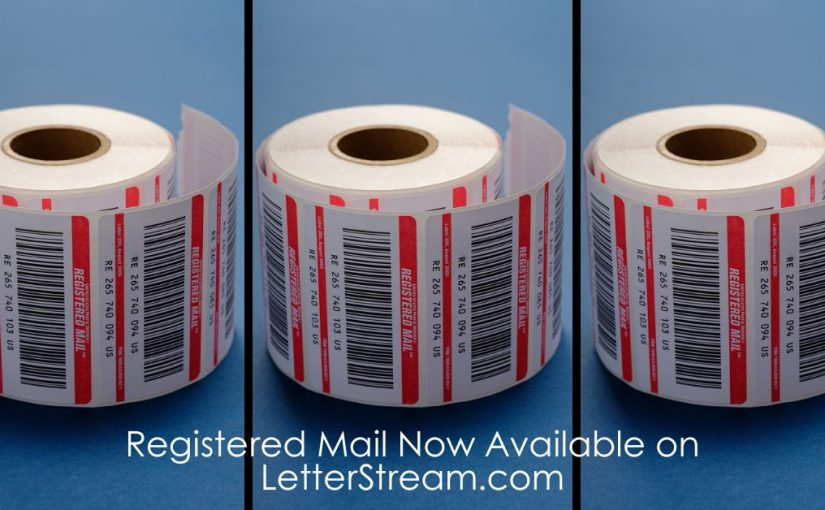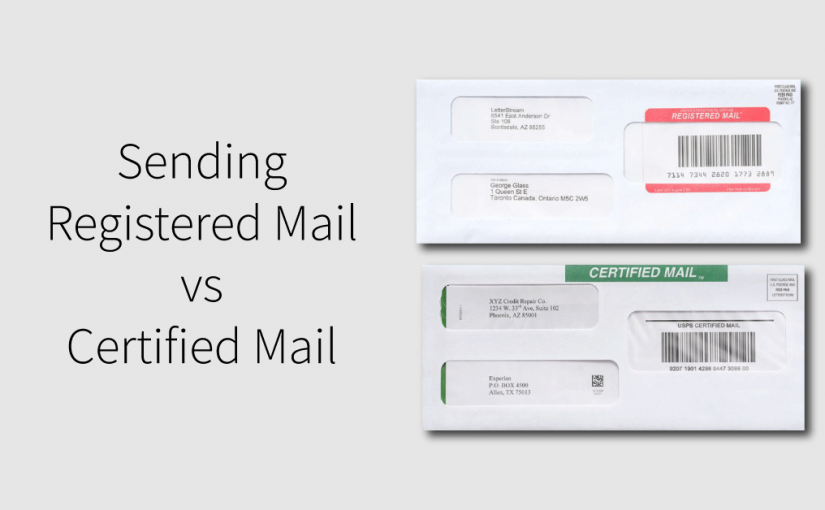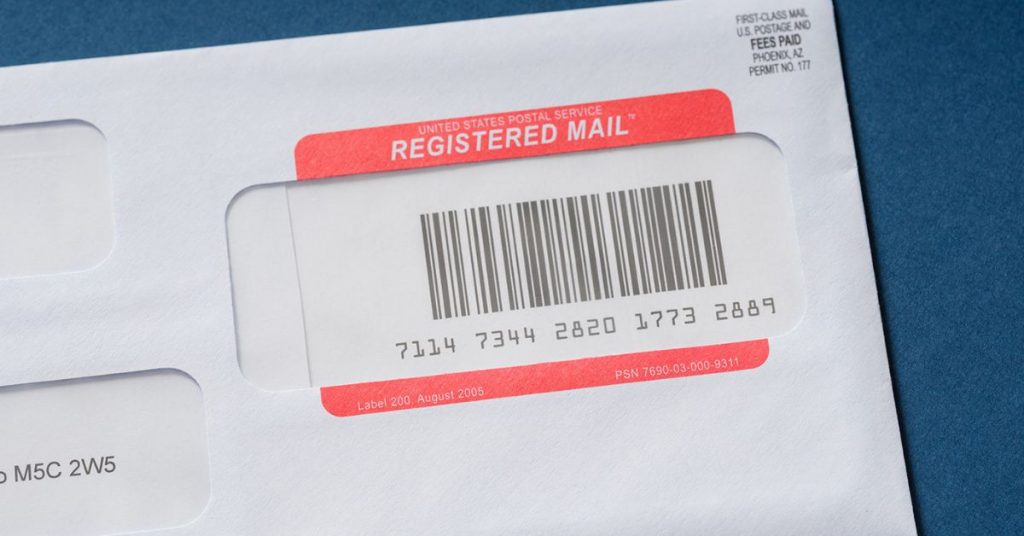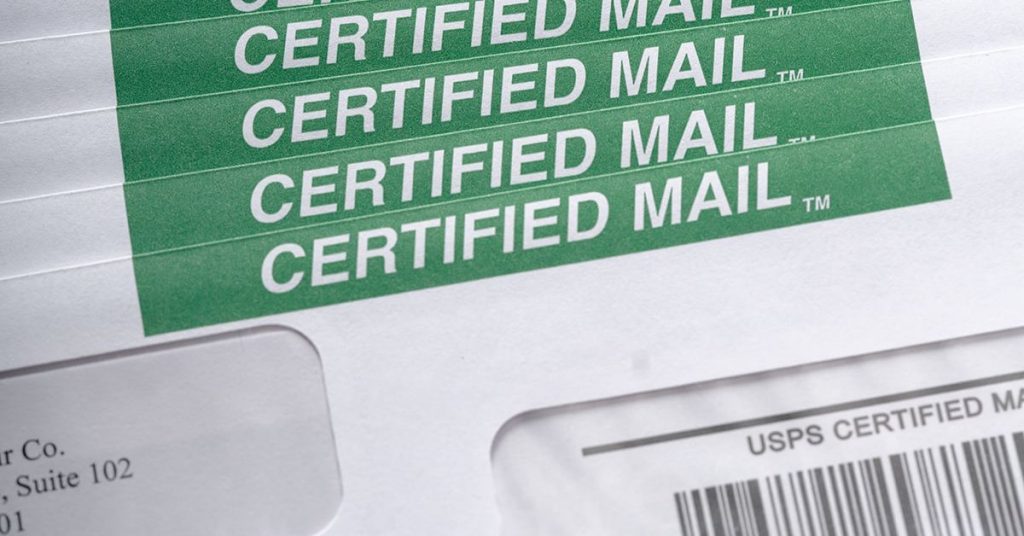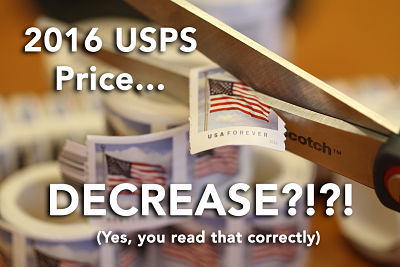We’re excited to announce that sending Registered Mail online is now available in your online portal. If you’re a company or someone who is required to send letters internationally with tracking then this product is definitely for you. We’ll dive into what Registered Mail is, the reality of sending letters this way, alternative options and how to access this feature in your account. Let’s dive in!
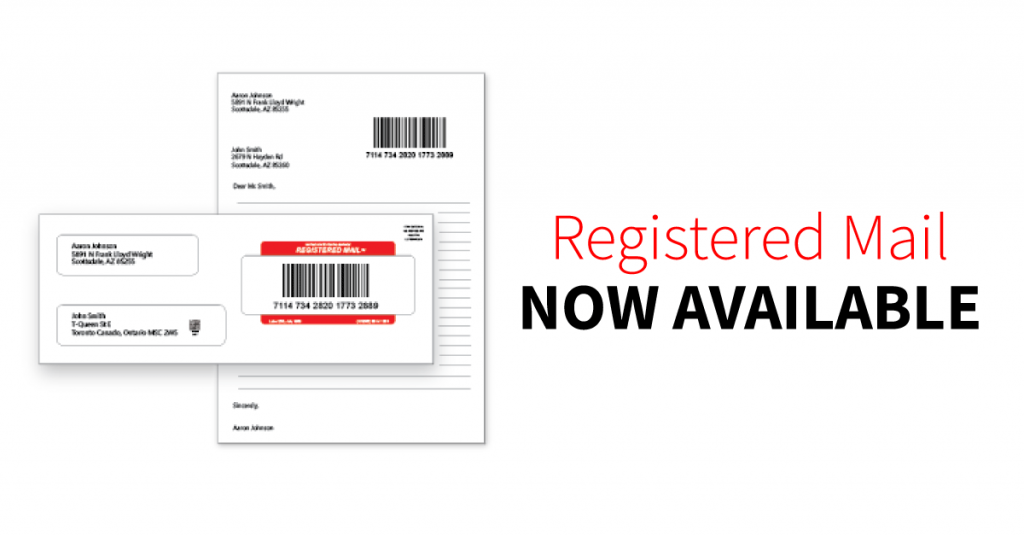
What is Registered Mail?
If you’re not sure what Registered Mail is here’s a quick overview:
USPS Registered Mail is basically like sending Certified Mail except it’s to international locations. You are supposed to get proof of mailing, a unique tracking code, proof of delivery and a signature confirmation upon delivery.
Now, here’s the thing, it is technically considered to be a more secure process than Certified Mail tracking is. With Registered Mail tracking the sender can potentially get more progress updates than one would if sending a Certified letter. Tracking Registered Mail is considered to be a more in-depth process. A Registered letter can be tracked from the beginning, starting with the person at the USPS Post Office, then to each location it arrives at and when, to its delivery status, delivery confirmation and recipient signature.
Sending A Registered Letter Isn’t For Everyone
With that being said, we want to be completely up-front and transparent about this new product offering. We go more in-depth about it on our blog post here, but the reality behind sending Registered Mail is that it actually isn’t as secure as the USPS claims it to be especially when sending to international addresses. After our part is done it gets sent to the Post Office and then shipped out from there. Once the letter lands in the destination country, a new courier is responsible for delivery. Because of that they may or may not follow the proper protocols and that is beyond our control.
Something else to keep in mind, the delivery timeframe can take a very long time, the cost is a lot higher (more on those later) and a signature confirmation is also NOT guaranteed.
Again, we’re only stating all of this because we want to make sure you’re aware of what to expect when sending your letters this way.

Ok, now let’s get more into the details of sending a registered letter.
The Pink Slip
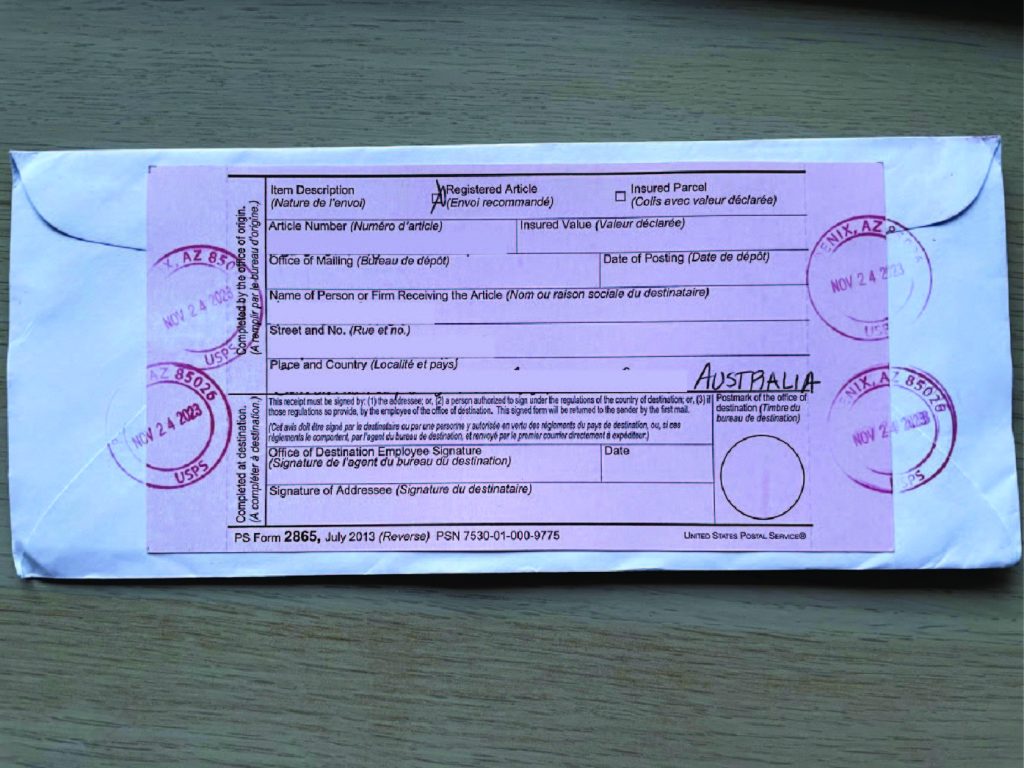
If you’ve never heard of a pink slip in the mailing world than let us explain. A Registered letter pink slip is the equivalent of a Certified Mail green card (which is also known as a Return Receipt or an Electronic Return Receipt). The pink slip is placed on the back side of a mailing envelope. It covers the envelope flap to help secure the mailing. The Post Office will also stamp on and around both the pink slip and the envelope flap so that the sender and receiver can see if either has been tampered with. Again, this is not guaranteed but it is essentially what is supposed to take place.
Registered Mail Cost
Let’s briefly talk about price. It’s important to know that the cost of sending a Registered letter is on the higher end, especially compared to sending regular mail. Since Registered Mail is sent internationally, the location changes the cost of sending it. When sending through LetterStream, the price for sending Registered Mail starts at $30 and goes up from there. Not so great, we know.
Delivery Time
Ok, here’s the other not-so-great part. Sending a Registered letter can take a while to get to its destination. Again, this all depends on the location the letter is being sent to but it’s important to note that it can take a long time for a letter to arrive. How long you ask? It can take, on average, 15 days (about 2 weeks) to be delivered but it can also take anywhere from 6-8 weeks (about 2 months). And yes, you did, in fact, read that correctly.
If you have to send a letter internationally then Registered Mail is for you. However, if you’re looking to send a secure letter within the US then USPS Certified Mail is absolutely the way to go.
Access Registered Mail in Your LetterStream Account

To send a Registered letter online through LetterStream, simply login to your online portal (if you’re new you can create a free account here) and click on ”Send Letters.”
On the right-hand side there will be a section called “I would like my mailing sent” and below that you can choose to send your letter as Registered Mail. You can then go through the process of uploading a job to the website and proofing it. From there we handle the rest, including the printing, stuffing and mailing. After your letter is sent you can go back into your account and track the process of it. Keep in mind, that only 15 sheets of paper can be sent in each Registered envelope.

Although Registered Mail is the most obvious choice when you’re required to send mail internationally with tracking, it is important to remember that the process can be more promising than it seems. Unfortunately, tracking, signature confirmation, and delivery are not actually guaranteed. Sometimes the tracking is behind or it doesn’t actually track throughout the entire process. Sometimes you may not actually receive a signature confirmation and like we mentioned above, sometimes it can take a really, really long time to arrive at its destination.
With that said, we don’t recommend using Registered Mail unless it’s an absolute must and, in that case, we’re happy to offer this product to you.
To learn more about Registered Mail click here and to learn more about Certified Mail service with USPS tracking click here.

